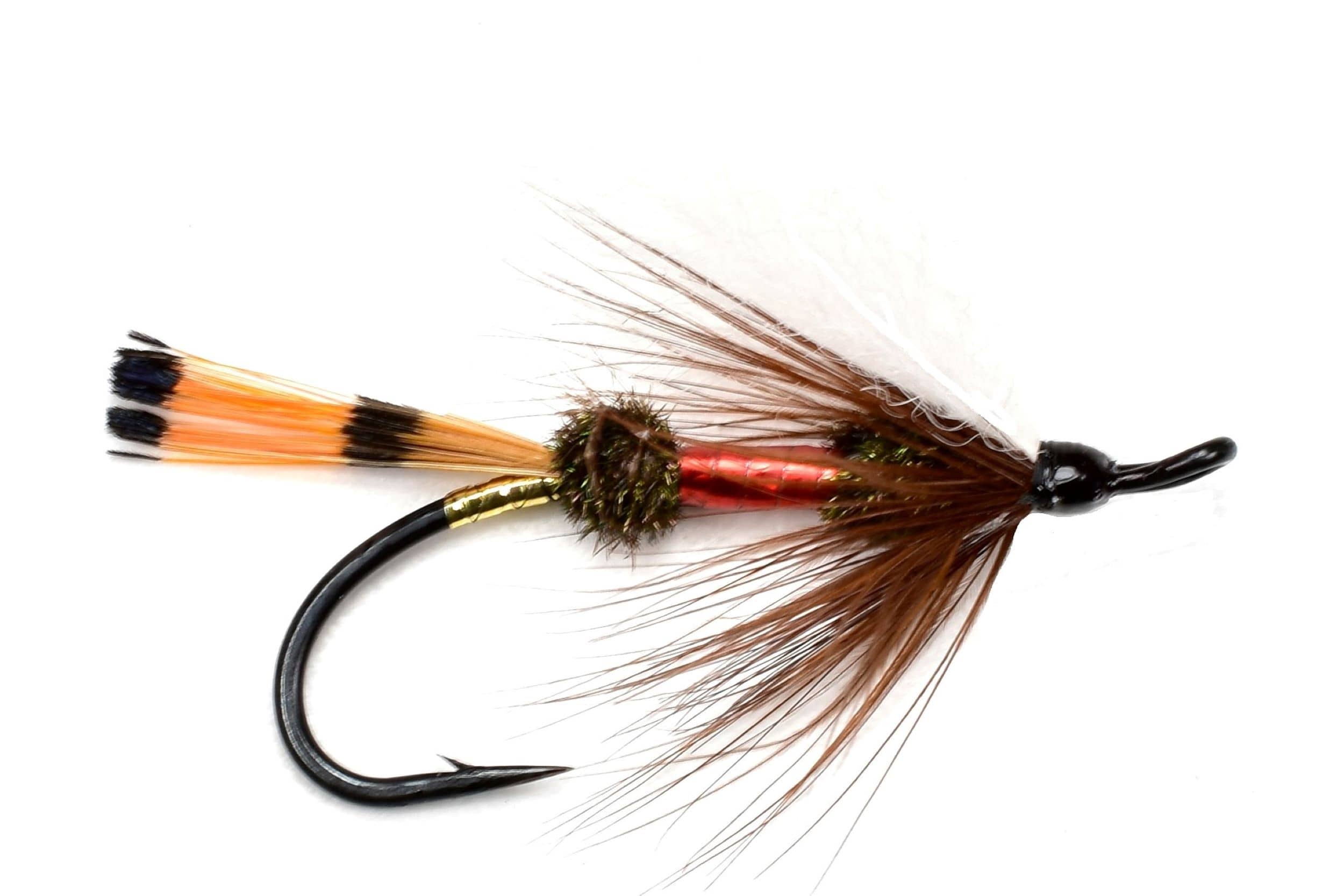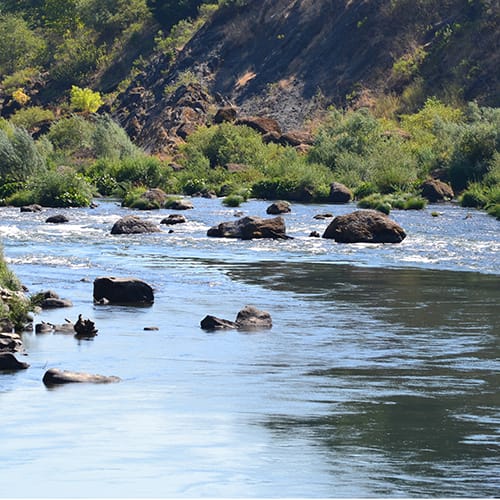Anglers tie thousands of summer steelhead flies for the Rogue and Klamath rivers. Interestingly, some have become popular while others have fallen from use. However, I have listed eight awesome proven flies for the Rogue and Klamath rivers. First, let me discuss the must have flies for the Rogue River. Not surprising, the Rogue has long been known for its half-pounder and adult summer steelhead. In the past, early flies were often small and dressed on double hooks. In addition, patterns were frequently tied with forward facing wings to add action to the fly when fished from a drift boat. Today, anglers tie most Rogue patterns with traditional backward facing wings. The four patterns below are reliable additions to any anglers fly box. Steelhead fly anglers can fish them with confidence.
Rogue River

No. 1 – Royal Coachman
Mary Orvis Marbury in her book Favorite Flies and Their Histories (1892) indicated the Royal Coachman was first tied by John Haily in 1878. Haily was a professional fly tyer from New York City. Later in the 1920’s, tackle shop owner Joe Wharton tied flies for Zane Grey for the Rogue River. The collection included several Royal Coachman flies. Undeniably this attractor pattern remains a great fish catching fly. The original pattern called for a white bucktail wing. However, I substitute Artic Fox or similar hair. The original version included a red floss belt but a red tinsel belt will make this pattern stand out.

No. 2 Skunk
Most accounts suggest Mildred Krogel of Roseburg created the Skunk pattern sometime in the 1930’s. Whereas early versions often had a white over black wing, today the pattern is commonly tied with a simple white wing. Later on, the fly became popular on the North Umpqua River and has also gain lasting fame on the Rogue River. A variation, the Green Butt Skunk, was originated by Dan Callahan for the North Umpqua in Oregon and remains popular too.

No. 3 – Cats Ass
Dennis P. Lee, the author, created this fly in 2006 as a golden stonefly representation. Interestingly, the fly is tied with a body of buff colored fur from an Abyssinian cat and a wing using brown speckled feather various waterfowl. Dried cases are common along the shoreline rocks and in addition, adult stoneflies are often see flying across the river in the summer.

No. 4 – Steelhead Muddler Minnow
In 1936, Dan Gapen from Minnesota created the Muddler Minnow. Interestingly , Gapen tied the pattern to represent a sculpin. Undeniably the pattern gained lasting fame and has become a staple for summer steelhead. Moreover, I like to fish the fly as a traditional wet fly or skated on the surface.
Klamath River
Now, let’s take a look at four more of the eight awesome proven flies for the Klamath River. In a like manner, Klamath River half-pounder and adult late summer/early fall summer steelhead are recognized for their willingness to take a fly. At the same time, most Klamath River fly patterns are natural looking buggy patterns. This reflects their active feeding behavior after entering freshwater. As such, imitations of natural insects are some of the most effective fly patterns.

No. 1 – Steelhead McGinty
The origin of the McGinty is somewhat unclear. Writers suggest the fly was created by Charles McGinty from Chicago in 1883. An early reference to the McGinty appeared in the Forest and Stream magazine, July 1902 – December 1902 issue. Under the heading Good List of Michigan Flies – “Get plenty of McGinty, for trout are freaky, and this is a freaky fly “the pattern became a trout fly staple. Early versions were tied with white tips mallard feathers. Contrarily, the steelhead version was tied with white tip grey squirrel tail hair. By the 1930’s, the McGinty was a popular western steelhead fly. The fly has shown a recent resurgence for Klamath River half-pounder and adult summer steelhead.

No. 2 – Steelhead Bee
Rodrick Haig-Brown, noted Canadian angling conservationist and writer, created the Steelhead Bee. The fly was first described in his book Fisherman’s Summer (1964). Additionally, Haig-Brown wrote he typically fished the fly upstream and dead drifted.
He noted – “The majority of steelheads I catch of three pounds and up either have nothing at all in their stomachs or signs of very casual activity- a bee or two, a yellow jacket, a deer fly, occasionally a large sedge, sometimes a winged dragonfly.” The Steelhead Bee is a great natural looking fly pattern. I fish it under the surface or on the surface as a skated fly.

No. 3 – Steelhead Caddis
Caddis flies fished for summer steelhead can prove effective. This version for the Klamath River came from Sacramento angler Bob Long through fly tier Andy Burke. This proven buggy fly pattern incorporates a ribbing and two strands in the wing of UV Flashabou for extra fish attraction.

No. 4 – Acroneuria nymph
In freshwater, half-pounder and adult summer steelhead will feed on a variety of items. Stoneflies (Order Plecoptera) are a common aquatic insect and rank high in the items consumed. Several species of the Family Perlodidae genus Acroneuria, commonly called golden stone flies, occur in West Coast rivers. More importantly, food habitat studies have demonstrated Acroneuria nymphs make up a large portion of summer steelhead diet. This awesome proven fly pattern is effective for Klamath River during the runs of late summer/early fall half-pounder and adult steelhead.
These eight awesome proven flies will compliment any anglers fly box. Additionally, anglers can fish any of these must have flies with confidence.
Purchase all of the above flies in the River Fly Box Collections.
Find more information at: 2 flies that will make most steelhead take notice
And also: why fur for pet hair dubbing – new proven techniques
